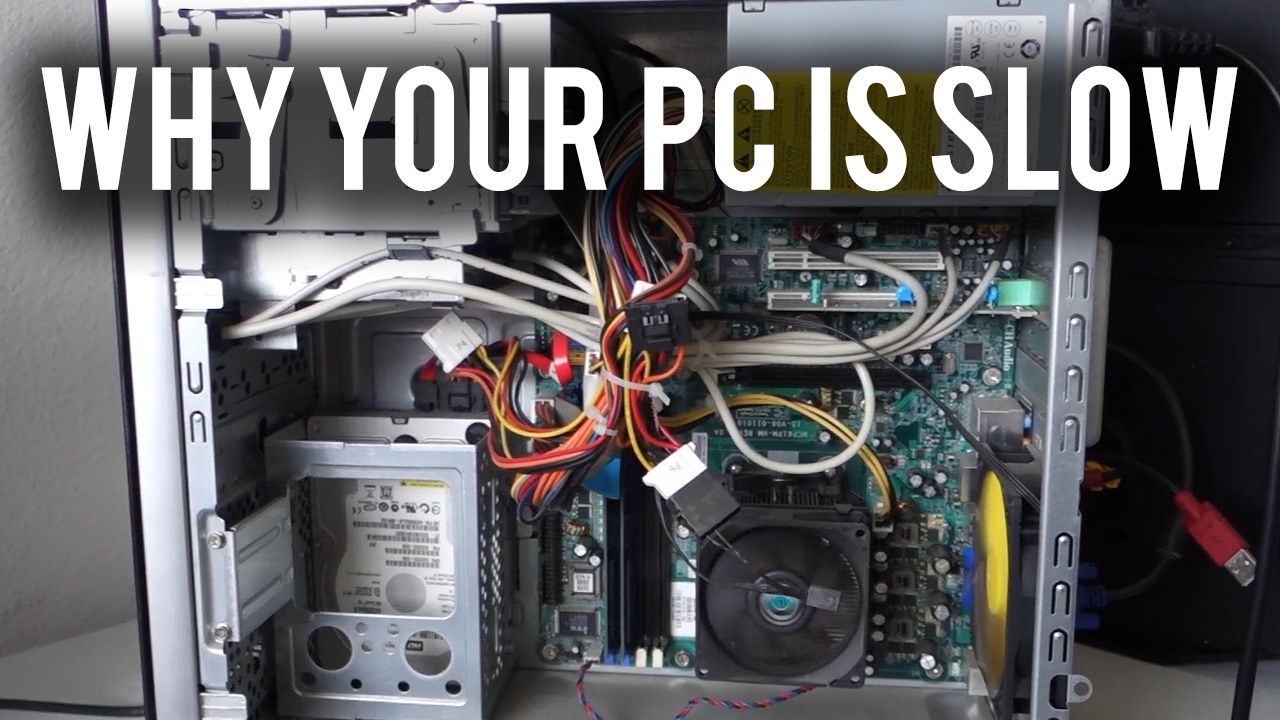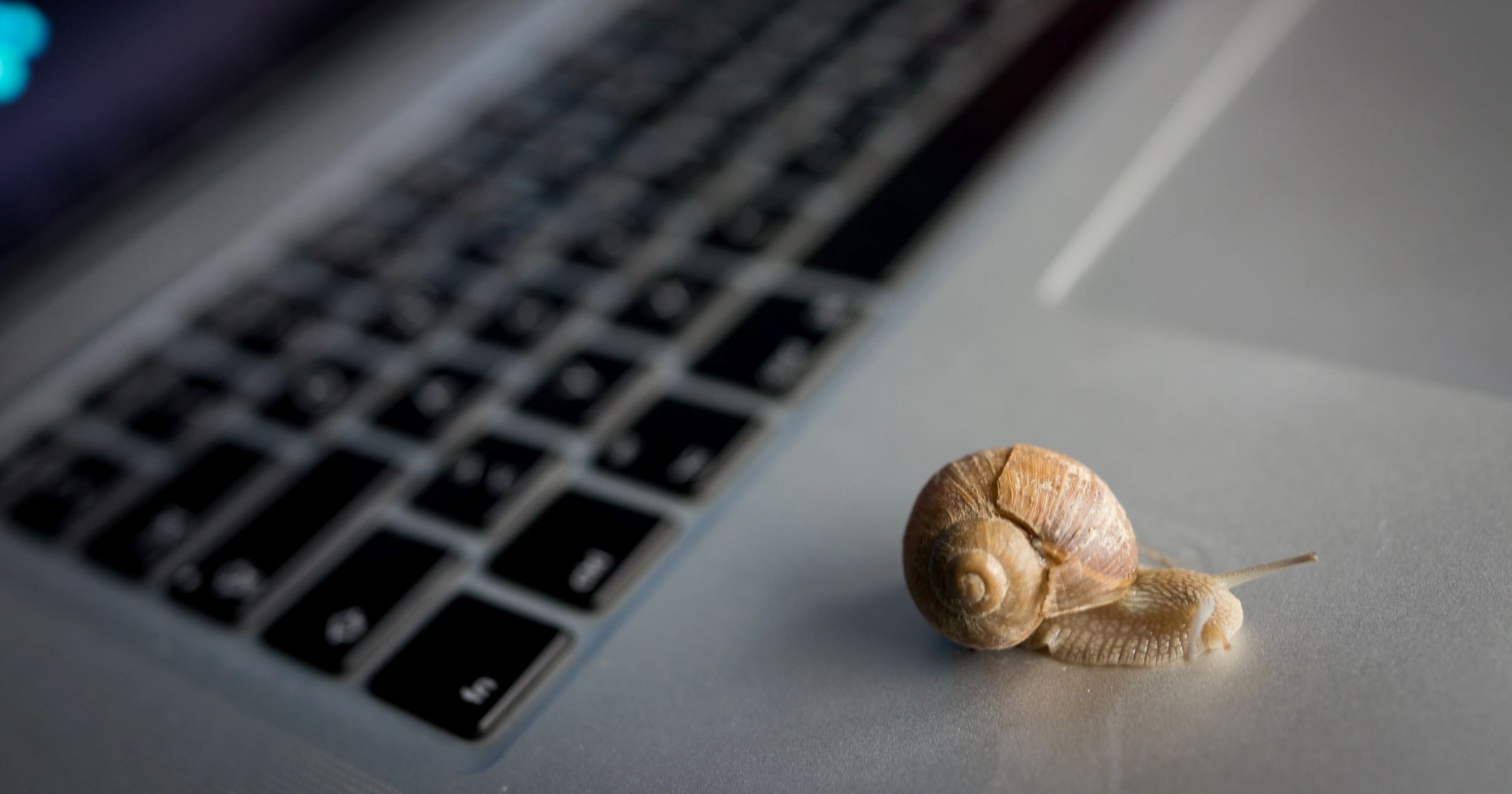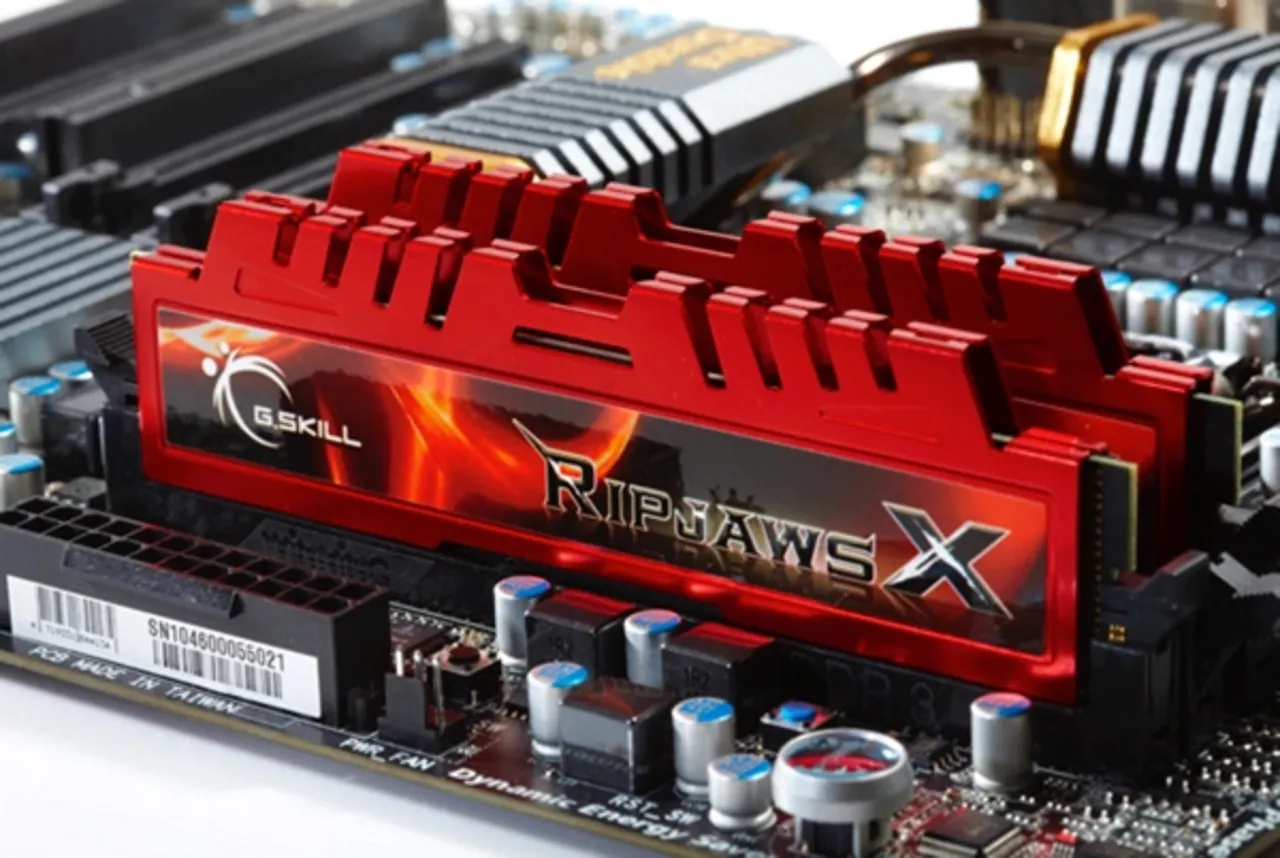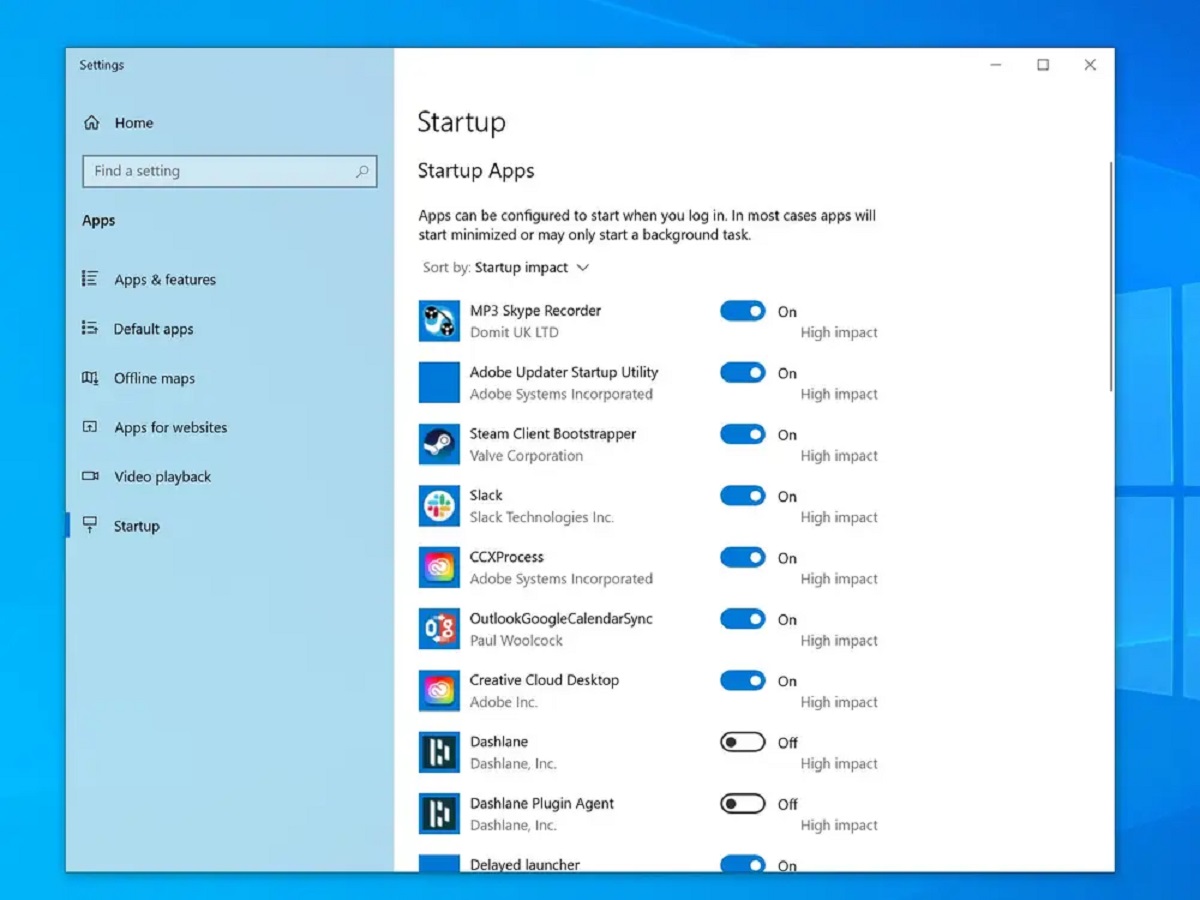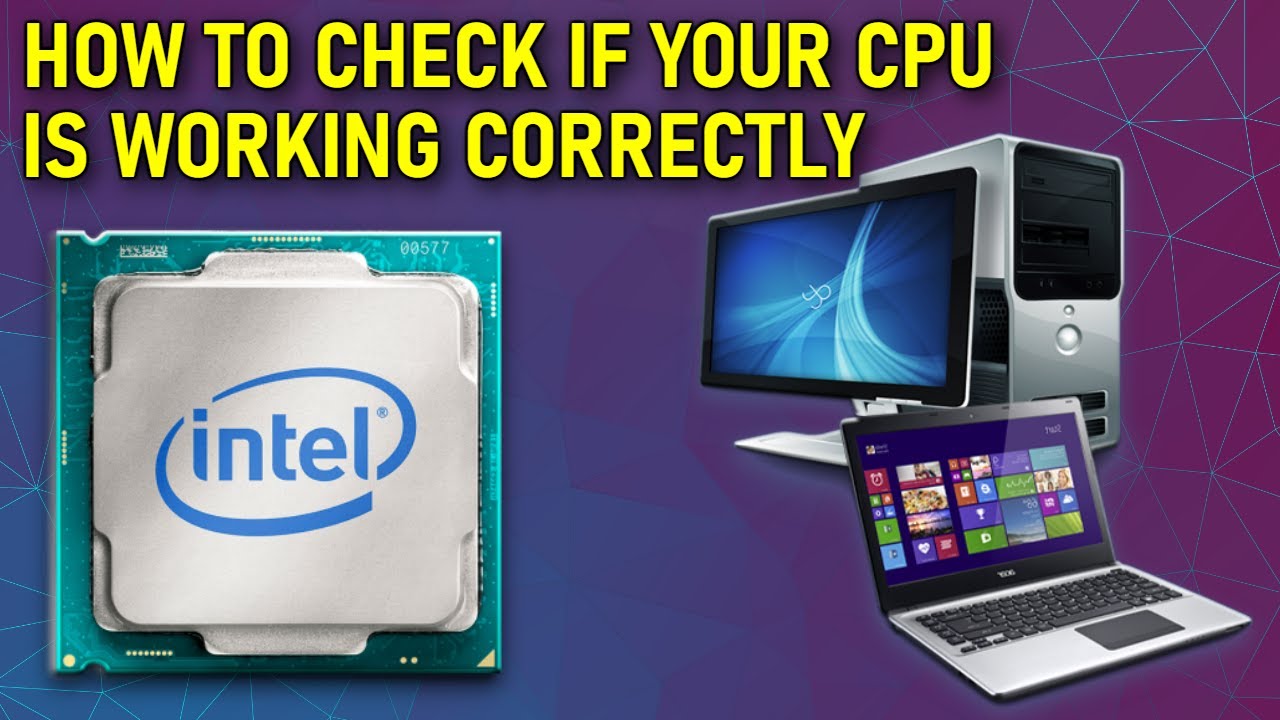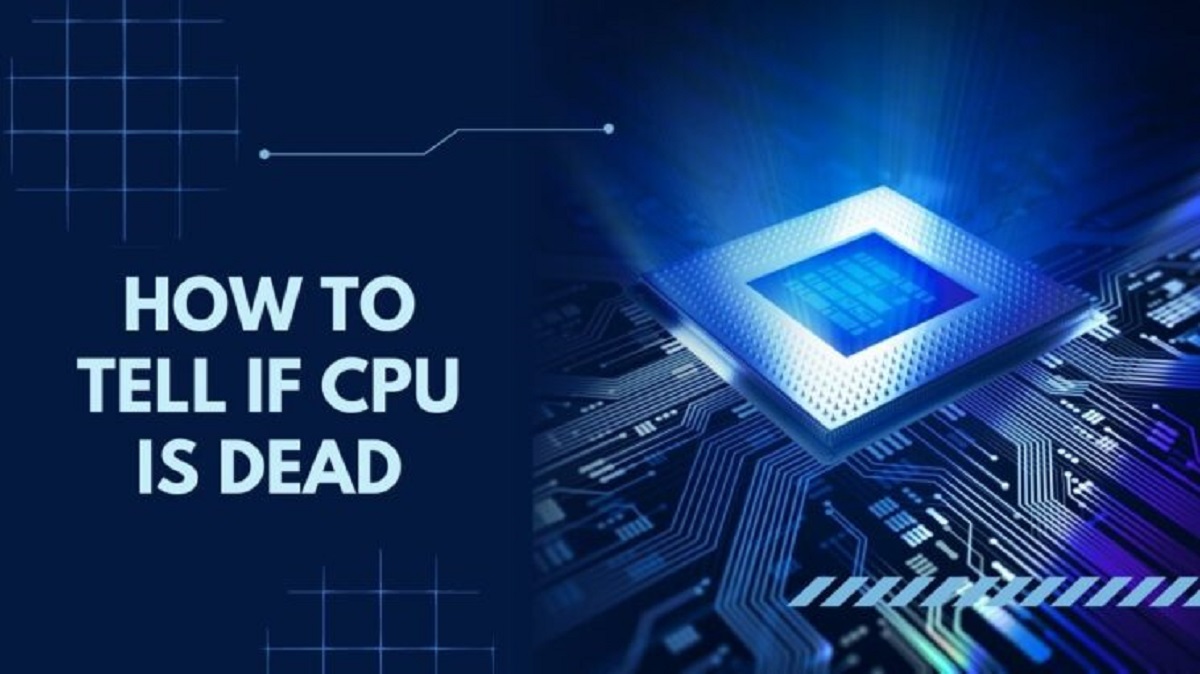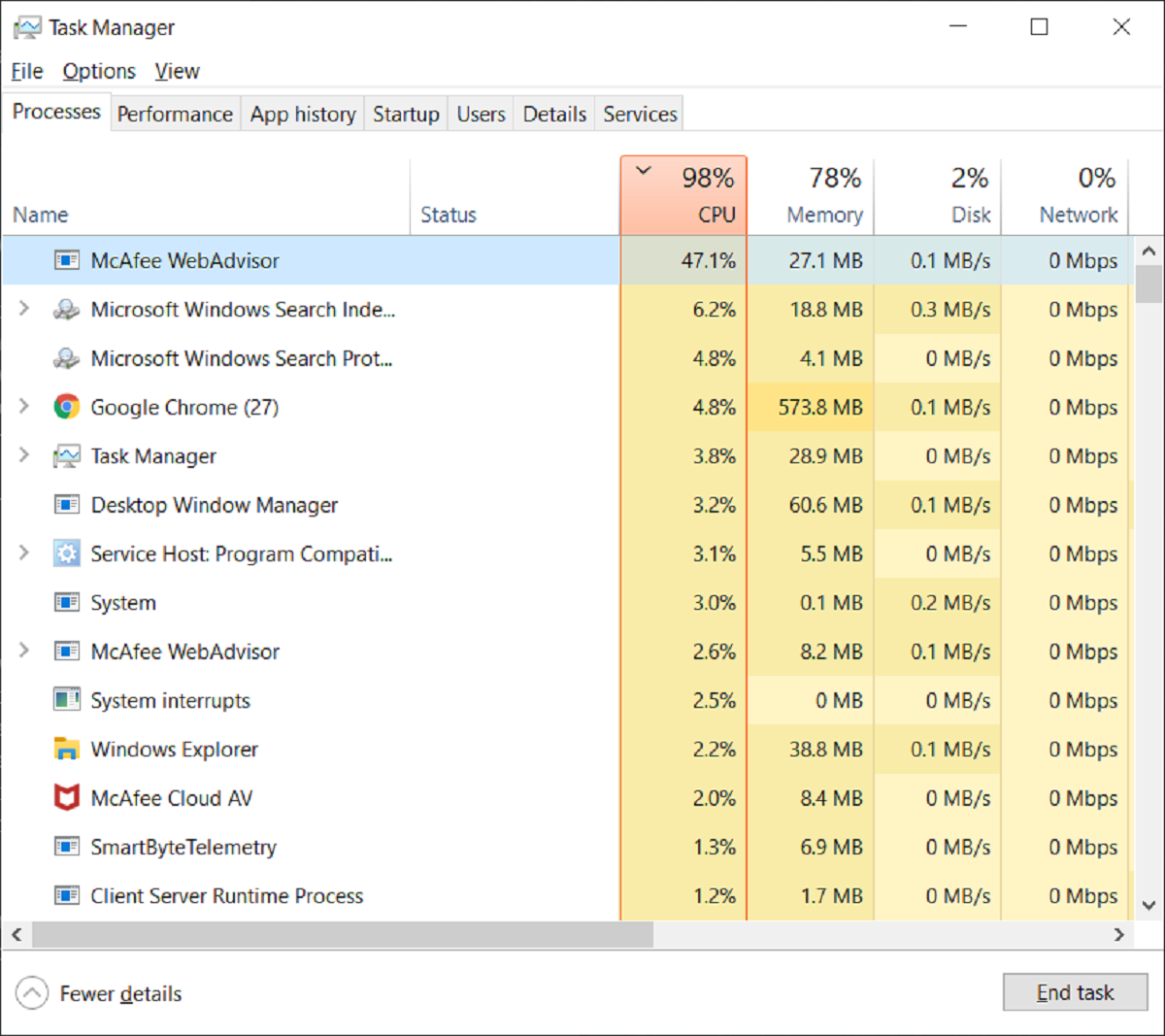Introduction
A slow CPU can be incredibly frustrating, especially when you rely on your computer for work or leisure activities. It can lead to delays, lagging performance, and an overall sluggish user experience. Understanding the causes of a slow CPU can help you pinpoint the problem and take the necessary steps to fix it.
A CPU, or Central Processing Unit, is the brain of the computer. It is responsible for executing commands, performing calculations, and managing all the tasks that keep your computer running smoothly. When your CPU is running slow, it hampers the performance of your entire system.
There are several common factors that can contribute to a slow CPU. Insufficient RAM, high CPU usage, background processes, malware, overheating, outdated drivers, and inadequate storage space can all play a role in slowing down your CPU’s performance.
In this article, we will explore each of these factors in detail and discuss how they can affect your CPU’s speed. By understanding the underlying causes, you will be better equipped to troubleshoot and resolve the issue, ensuring that your CPU operates at optimal efficiency.
Common Causes of a Slow CPU
When your computer’s CPU is running slow, it can be a frustrating experience. There are several common causes that can contribute to a slow CPU, each with its own unique impact on your computer’s performance. By identifying these causes, you can take the necessary steps to address the issue and restore your CPU to its optimal speed.
1. Insufficient RAM: If your computer does not have enough Random Access Memory (RAM), it can put a strain on your CPU’s performance. Insufficient RAM means that your computer has to rely on virtual memory, which is significantly slower than physical memory, leading to a slow CPU.
2. High CPU Usage: Excessive CPU usage by certain applications or processes can cause your CPU to run at full capacity, resulting in sluggish performance. Resource-intensive tasks such as video editing, gaming, or running complex software can result in high CPU usage and slow down your system.
3. Background Processes and Applications: It’s common for various programs and applications to run in the background, consuming valuable CPU resources. These hidden processes can slow down your CPU and impact overall performance. Closing unnecessary background applications can free up CPU power and help alleviate the slowness.
4. Malware and Viruses: Malicious software can wreak havoc on your computer’s performance, including slowing down your CPU. Malware and viruses can utilize your CPU’s resources for their own purposes, leading to a significant decrease in performance. Regularly scanning your system for malware and keeping your antivirus software updated is crucial to prevent such issues.
5. Overheating: When your CPU becomes hot due to inadequate cooling or excessive system usage, it can throttle its performance to prevent damage. This results in a slower CPU to reduce heat production. Regularly cleaning your computer’s cooling system and ensuring proper airflow can help prevent overheating and maintain optimal CPU performance.
6. Outdated Drivers: Drivers are software components that ensure proper communication between hardware devices and your operating system. Outdated or incompatible drivers can cause performance issues, including a slow CPU. Keeping your drivers up to date can help resolve compatibility issues and improve overall performance.
7. Inadequate Storage Space: A lack of storage space on your hard drive can impact your CPU’s performance. Insufficient space can slow down your computer’s ability to access and process data, resulting in a slow CPU. Regularly freeing up disk space and optimizing your storage can help prevent this issue.
By understanding these common causes of a slow CPU, you can proactively address them and optimize your computer’s performance. In the following sections, we will discuss each of these causes in more detail and provide solutions to help you resolve them.
Insufficient RAM
Insufficient RAM, or Random Access Memory, is a common cause of a slow CPU. RAM is a crucial component of your computer’s performance as it stores the data that is actively being used by your CPU. When there is not enough RAM available, your computer has to rely on slower virtual memory, which causes a significant decrease in CPU speed.
When your computer runs out of physical RAM, it starts using a portion of your hard drive called the swap file or page file as virtual memory. While virtual memory allows your computer to continue running when RAM is depleted, it is much slower than physical RAM. This can result in a noticeable slowdown in CPU performance as your computer has to constantly transfer data between the physical RAM and the swap file.
There are several factors that can contribute to insufficient RAM. One common reason is running memory-intensive applications or having multiple applications open simultaneously. Resource-intensive tasks such as video editing, gaming, or running complex software can consume a large amount of RAM and can quickly exhaust the available resources.
Another reason for insufficient RAM is having too many background processes and applications running. Many programs and utilities run in the background, silently consuming RAM. These background processes may not be actively used by you, but they still take up valuable memory space and can slow down your CPU significantly.
To address the issue of insufficient RAM, there are several steps you can take:
- Upgrade your RAM: One of the most effective solutions is to increase the amount of RAM in your computer. By installing additional RAM modules, you give your CPU more space to store and access data quickly, leading to improved performance and a faster CPU.
- Close unnecessary applications and processes: Closing unused applications and terminating unnecessary background processes can free up RAM resources. Use the Task Manager (Windows) or Activity Monitor (Mac) to identify resource-hungry applications and processes and close them to free up RAM for your CPU to use.
- Limit startup programs: Many applications automatically launch when you start your computer, consuming valuable RAM. Use system settings or third-party applications to manage startup programs and disable unnecessary ones to optimize your CPU’s performance.
- Optimize your virtual memory settings: Adjusting the virtual memory settings on your computer can help improve performance when RAM is running low. Increasing the virtual memory allocation or letting the operating system manage it automatically can provide more space for the CPU to work with. However, keep in mind that relying too heavily on virtual memory can negatively impact overall performance, so it’s important to find a balance.
By addressing the issue of insufficient RAM through upgrades and optimizing RAM usage, you can significantly improve your CPU’s performance. The additional resources and faster data access provided by sufficient RAM will result in a smoother and more efficient computing experience.
High CPU Usage
High CPU usage is another common cause of a slow CPU. When your computer’s CPU is constantly running at or near its maximum capacity, it can lead to sluggish performance and a noticeable decrease in speed. Several factors can contribute to high CPU usage, and understanding them can help you address the issue effectively.
One primary reason for high CPU usage is resource-intensive tasks. Certain applications and processes, such as video editing software, gaming programs, or complex data analysis tools, require a significant amount of processing power from the CPU. When you run these tasks, it is not uncommon for the CPU to operate at near full capacity, resulting in high CPU usage and a slower overall system performance.
Another culprit for high CPU usage is poorly optimized software or inefficient code. Some applications are not optimized to make efficient use of system resources, causing them to consume more CPU power than necessary. This can lead to unnecessary strain on your CPU and an increase in CPU usage, ultimately slowing down your computer.
Malware infections can also cause high CPU usage. Malicious software can run hidden processes or launch multiple instances, consuming a significant portion of your CPU resources. CPU usage spikes, even when the computer is idle, can be an indicator of malware activity. Running a reliable antivirus scan and removing any detected malware is essential to combat high CPU usage caused by malicious programs.
To address high CPU usage, consider the following measures:
- Close resource-intensive applications: If you’re experiencing high CPU usage while running specific applications, consider closing them or limiting their usage when they are not necessarily required. This can help free up CPU resources, allowing other tasks to run smoothly.
- Update and optimize software: Ensure that all your software applications are up-to-date, including the operating system. Developers often release updates that include performance improvements and bug fixes, which can help reduce CPU usage. Additionally, consider optimizing any poorly coded or resource-intensive software to make them more efficient.
- Install a reliable antivirus program: Regularly perform system scans with an updated antivirus program to identify and remove any malware that may be causing high CPU usage. Keeping your computer protected from malicious software is vital to maintaining optimal CPU performance.
- Monitor and manage background processes: Use Task Manager (Windows) or Activity Monitor (Mac) to identify resource-hungry background processes and unnecessary startup programs. By selectively closing or disabling these processes, you can free up CPU resources and reduce overall CPU usage.
- Consider hardware upgrades: In some cases, high CPU usage may be a result of outdated or underpowered hardware. If you consistently encounter high CPU usage even after optimizing software and managing processes, upgrading your CPU or other hardware components may be necessary to achieve better performance.
By identifying and addressing the causes of high CPU usage, you can optimize your CPU’s performance and improve overall system responsiveness. Implementing these measures will ensure that your CPU operates efficiently and provides you with a smooth computing experience.
Background Processes and Applications
Background processes and applications running on your computer can have a significant impact on CPU performance. Even when you’re not actively using them, these hidden processes continue to consume CPU resources, leading to a slow CPU and overall sluggishness in the system.
Background processes are tasks or programs that run in the background without the need for direct user interaction. They are typically required for the proper functioning of the operating system, device drivers, and various utilities. However, certain background processes can consume an excessive amount of CPU resources, causing high CPU usage and a slow CPU.
One example of a common background process is an antivirus program. While important for keeping your computer secure, antivirus software often runs continuous scans or real-time protection mechanisms that periodically utilize CPU resources. Other background processes can include system updates, file indexing services, cloud storage synchronization, and scheduled maintenance tasks.
In addition to background processes, background applications can also impact CPU performance. These are applications that are running in the background, even if no windows are open or active. Examples of background applications include instant messaging services, media players, chat programs, or backup software.
To address the issue of background processes and applications affecting CPU performance, consider the following steps:
- Identify resource-hungry processes: Use the Task Manager (Windows) or Activity Monitor (Mac) to identify processes that consume a significant amount of CPU resources. Sort the processes by CPU usage and pay attention to the ones that are consistently utilizing a high percentage of CPU power.
- Close unused applications: Close any applications that are running in the background but not actively being used. This helps free up CPU resources, allowing the CPU to allocate its power to other tasks that are currently in use.
- Disable unnecessary startup programs: Many applications automatically launch when you start your computer, running in the background and consuming CPU resources. Identify and disable any unnecessary startup programs in the system settings or using third-party applications to reduce the number of background applications running.
- Adjust background application settings: Some applications may have settings that allow you to control their behavior in the background. For example, you can configure file syncing programs to sync only during specific times or limit the number of instant messaging services running in the background.
- Optimize system settings: Adjusting system settings related to visual effects and background services can help reduce CPU usage. For example, disabling unnecessary visual effects or adjusting the power settings to prioritize performance can help optimize CPU performance.
- Upgrade hardware: If you consistently encounter high CPU usage due to background processes and applications, consider upgrading your hardware. A more powerful CPU or increasing the amount of RAM can better handle the demands of background processes, resulting in improved overall CPU performance.
By managing background processes and applications effectively, you can help alleviate the strain on your CPU and improve its performance. Taking these steps will ensure that your CPU can focus on the tasks you actively use, resulting in a faster and smoother computing experience.
Malware and Viruses
Malware and viruses pose a serious threat to your computer’s performance, including the speed and efficiency of your CPU. Malicious software can exploit system vulnerabilities and run hidden processes that consume a significant amount of CPU resources, leading to high CPU usage and a slow CPU.
Malware includes a wide range of harmful software, such as viruses, worms, spyware, adware, and ransomware. These malicious programs can infiltrate your computer through various means, such as infected email attachments, compromised websites, or software downloads from untrustworthy sources.
Once your computer is infected, malware can perform multiple activities in the background that contribute to high CPU usage. These activities may include mining cryptocurrencies for the attacker’s benefit, launching distributed denial-of-service (DDoS) attacks, or stealing personal information.
Signs of malware infection often include a noticeable decrease in CPU performance, frequent system crashes or freezes, unusual network activity, or unexplained pop-up ads. If you suspect that your computer has been infected with malware, it is crucial to take immediate action to minimize the impact on your CPU and overall system performance.
To address the issue of malware and viruses impacting CPU performance, follow these steps:
- Install a reliable antivirus program: Select and install a reputable antivirus software that offers real-time protection. Regularly update the antivirus software and perform full system scans to detect and remove any existing malware that may be causing high CPU usage.
- Enable firewall protection: Activate the built-in firewall protection on your computer to prevent unauthorized access and block malicious connections that can contribute to CPU slowdowns.
- Be cautious with downloads and email attachments: Avoid downloading files or opening email attachments from unknown or suspicious sources. Use caution when interacting with links and be wary of phishing attempts that can lead to malware infections.
- Regularly update software and operating system: Keep your computer’s software, including the operating system and applications, up to date. Software updates often include important security patches that help protect your system from known vulnerabilities exploited by malware.
- Enable automatic system updates: Configure your computer’s settings to automatically install updates for the operating system and applications. Regular updates ensure that any newly discovered security vulnerabilities are patched promptly.
- Practice safe browsing habits: Be mindful of the websites you visit and exercise caution when clicking on ads or links. Stick to reputable and trusted websites, use ad-blockers, and avoid clicking on suspicious or unsolicited pop-up ads.
By taking these preventive measures, being proactive with security practices, and regularly scanning for malware, you can minimize the risk of CPU slowdowns caused by malicious software. Keeping your system clean and protected allows your CPU to operate at its full potential, ensuring optimal performance.
Overheating
Overheating is a common cause of a slow CPU and can have a detrimental effect on your computer’s overall performance. When your CPU becomes too hot, it can throttle its speed to prevent damage, resulting in a slower CPU and decreased system responsiveness.
There are several reasons why your CPU may overheat. One of the most common causes is inadequate cooling. If your computer’s cooling system, such as fans or heat sinks, is clogged with dust or not functioning properly, it cannot effectively dissipate the heat generated by the CPU. This leads to an increase in the CPU’s internal temperature, triggering thermal throttling and a reduction in CPU performance to prevent overheating.
Another reason for overheating is excessive system usage. Running CPU-intensive tasks, such as gaming or video editing, for extended periods can put a significant strain on your CPU, causing it to heat up quickly. Additionally, running multiple resource-intensive applications simultaneously can also contribute to increased CPU temperature and subsequent performance degradation.
To address the issue of overheating and improve CPU performance, consider the following steps:
- Clean the cooling system: Regularly clean the cooling system inside your computer, including fans, heat sinks, and vents, to remove dust and debris. This allows for better air circulation and heat dissipation, preventing the CPU from overheating.
- Ensure proper airflow: Make sure that your computer is placed in a well-ventilated area with sufficient space around it. Avoid obstructing the airflow by placing the computer on soft surfaces or blocking the vents. Proper airflow helps maintain lower CPU temperatures.
- Consider additional cooling solutions: If your CPU continues to overheat despite cleaning the cooling system, consider installing additional cooling solutions. This can include adding more fans, upgrading to a more efficient CPU cooler, or even using liquid cooling systems for better heat dissipation.
- Reduce system usage: Avoid running excessive CPU-intensive tasks simultaneously, especially for extended periods. Close unnecessary applications and avoid opening multiple resource-demanding programs simultaneously, as they can contribute to increased CPU temperature and potential overheating.
- Monitor CPU temperature: Utilize software utilities or BIOS settings to monitor your CPU’s temperature. This allows you to keep an eye on the temperature levels and take appropriate action if it exceeds safe limits, such as slowing down your CPU or taking steps to cool it down.
- Ensure proper power management: In some cases, incorrect power management settings can contribute to overheating. Ensure that your computer’s power settings are properly configured to avoid excessive CPU usage and heat generation.
By addressing the issue of overheating and implementing the necessary cooling measures, you can significantly improve your CPU’s performance. Keeping your CPU within optimal temperature ranges ensures that it can operate at its full potential, resulting in a faster and more efficient computing experience.
Outdated Drivers
Outdated drivers can have a significant impact on CPU performance. Drivers are software components that facilitate communication between your computer’s hardware devices and the operating system. When drivers become outdated, they may not be fully compatible with the latest software updates or contain bug fixes that could improve performance. This can lead to a slow CPU and decreased system responsiveness.
Outdated drivers can affect various hardware components, including the CPU. When a driver for a specific hardware device is outdated, it may not efficiently utilize the CPU’s capabilities or may contain inefficiencies that can hinder performance. As a result, the CPU may not be able to function at its optimal speed, leading to a slower overall system performance.
Updating drivers is essential to ensure that your CPU and other hardware components can work together efficiently. Here are some steps you can take to address outdated drivers:
- Identify outdated drivers: Use driver management software or check the manufacturer’s website to determine if any of your system’s drivers are outdated. Look for drivers related to the CPU, motherboard, graphics card, and other critical components.
- Manually update drivers: Visit the manufacturer’s website for each hardware component and search for the latest driver updates. Download the updated drivers and follow the provided instructions for installation.
- Use driver update software: Consider using reputable driver update software that can scan your system, identify outdated drivers, and automatically download and install the latest versions. Be cautious when choosing such software and ensure that it comes from a trusted source.
- Check for operating system updates: Sometimes, it’s not just the hardware drivers that need updating but also the operating system itself. Regularly check for operating system updates and install them to ensure compatibility and performance improvements.
- Configure automatic driver updates: Set up your system to automatically download and install driver updates. This ensures that you have the latest drivers for your hardware components without manually checking and updating each one.
- Regularly review and update drivers: Keep track of driver updates and periodically review your system for any new releases. Hardware manufacturers often release updates to address compatibility issues, enhance performance, and fix bugs, so staying up to date is crucial.
By keeping your drivers up to date, especially those related to your CPU and other essential hardware components, you can ensure that your system operates at its full potential. Updated drivers optimize CPU performance, resulting in a faster and more efficient computing experience.
Inadequate Storage Space
Inadequate storage space on your computer’s hard drive can have a significant impact on CPU performance. When your hard drive is nearly full, it can affect the CPU’s ability to quickly access and process data, resulting in a slow CPU and decreased system responsiveness.
When your computer’s storage space is running low, it can cause several issues that impact the CPU:
- Increased disk fragmentation: As files are created, modified, and deleted, the data on your hard drive can become fragmented. Fragmentation leads to slower data retrieval since the CPU has to search and access multiple fragmented files, resulting in a slower CPU and reduced performance.
- Slower data transfer rates: When your hard drive is nearly full, there is less available space for temporary files and caching. This can lead to slower data transfer rates between the hard drive and CPU, as the system struggles to find free space and optimize data retrieval.
- Compromised virtual memory performance: When the available storage space is limited, it affects the system’s ability to use virtual memory effectively. Virtual memory is space on the hard drive used to supplement physical RAM. If the hard drive has insufficient space for virtual memory, it can result in slower overall system performance.
- Reduced efficiency for temporary files and caches: Many applications, including web browsers and operating systems, use temporary files and caching to improve performance. Inadequate storage space can hinder the creation and utilization of these temporary files and caches, resulting in degraded CPU performance.
To address the issue of inadequate storage space and improve CPU performance, consider the following steps:
- Cleanup unnecessary files: Regularly remove temporary files, unused applications, and old documents or media that are no longer needed. Use disk cleanup tools or manual methods to free up storage space and improve overall system performance.
- Defragment your hard drive: Use the built-in defragmentation tool or third-party software to defragment your hard drive. This reorganizes fragmented data, allowing for faster access and retrieval, ultimately improving CPU performance.
- Monitor and manage disk space: Keep an eye on your computer’s storage usage by regularly checking the available disk space. Be proactive in managing your files and deleting unnecessary ones to maintain adequate free space on your hard drive.
- Consider upgrading your storage: If you find that you consistently run out of storage space, consider upgrading your hard drive to a larger capacity or investing in additional external storage options. Having ample available storage space ensures better performance for your CPU and overall system.
- Invest in cloud storage: Offloading some data to cloud storage services can help free up local storage space and improve CPU performance. Cloud storage allows you to access files remotely, reducing the dependency on local storage for data retrieval.
By ensuring that you have adequate storage space and regularly managing your files, you can optimize CPU performance. A cleaner and more organized storage environment allows for faster data access and retrieval, leading to a faster CPU and improved overall system performance.
Summary
A slow CPU can be frustrating, but by understanding the common causes and taking appropriate measures, you can improve its performance. Inadequate RAM can be addressed by upgrading RAM, closing unnecessary applications, and optimizing virtual memory settings.
High CPU usage can be resolved by closing resource-intensive applications, updating software, and managing background processes. Malware and viruses can be addressed by installing antivirus software, practicing safe browsing habits, and regularly updating software.
Overheating can be mitigated by cleaning the cooling system, ensuring proper airflow, and reducing system usage. Outdated drivers can be updated manually or with driver update software, and inadequate storage space can be managed by cleaning up unnecessary files and defragmenting the hard drive.
By addressing these common causes, you can optimize your CPU’s performance and restore faster and more efficient computing. Regular maintenance, updates, and proactive measures can help ensure that your CPU runs at its full potential, providing a smoother and more enjoyable user experience.







